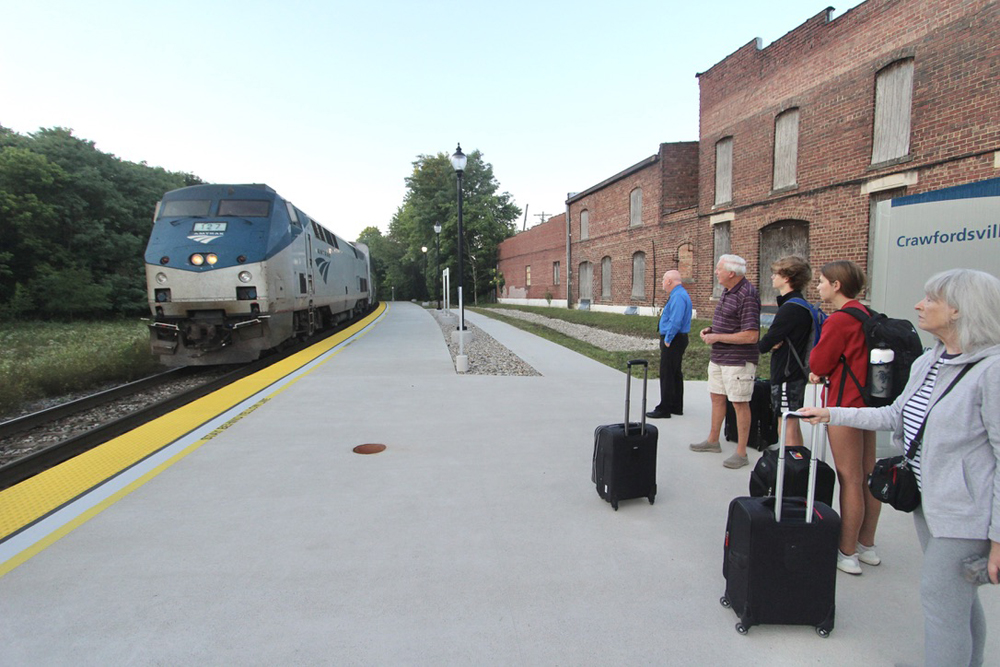
CHICAGO — “Unforeseen mechanical issues” resulted in the cancellation of Amtrak’s westbound Cardinal out of New York on Wednesday, Aug. 23, despite the fact that the triweekly train’s equipment had arrived at the Big Apple’s Sunnyside Yard late Sunday. As has been recent custom, this resulted in the cancellation of its eastbound counterpart from Chicago today (Aug. 24).
Amtrak spokesman Marc Magliari tells Trains News Wire, “That decision was made, with apologies, due to no other available options.”
It is part of widespread and varied group of difficulties for the passenger operator in recent days, which also include departure delays from terminals and operating restrictions because of high heat.
Terminal delays
On Tuesday evening, both the eastbound Cardinal and Capitol Limited were delayed leaving Chicago by more than two hours at 8:24 p.m. and 8:45 p.m., respectively. The Capitol’s short Superliner consist had arrived from Washington, D.C., the same day, but the Cardinal’s two coaches, Amfleet II cafe, Viewliner sleeping car and Viewliner baggage-sleeper had been in the Windy City since Monday.
At Washington Union Station last Sunday, Aug. 20, both the Miami-bound Silver Meteor and Atlanta-bound Crescent waited more than two hours to switch motive power from electric to diesel.
These are just some of the disruptions illustrating how travelers who rely on Amtrak continue to be impacted by the shortage of serviceable equipment, maintenance issues, and the difficulty in active cars in motion.
A Trains News Wire analysis of 77 Chicago long-distance departures from Aug. 14 through Aug. 23 reveals that at least 19 trains left Union Station more than 20 minutes late. The longest terminal delays were a Southwest Chief departing 3 hours, 46 minutes late on Saturday, Aug. 19, and a 2-hour, 49-minute delay to the same day’s Empire Builder. The California Zephyr and Chief accounted for nearly 50% of the late departures.
Issues in the Midwest are not limited to long-distance service. The Amtrak Alerts social media feed lists this morning’s Illinois Zephyr from Quincy, Ill., to Chicago as having been cancelled; no reason was reported. One Wednesday round trip of the Chicago-Milwaukee Hiawatha was also cancelled because of “unforeseen mechanical issues.”
High heat’s impact

The New York-New Orleans Crescent has been turning at Atlanta after Norfolk Southern began imposing low-speed heat restrictions south of Tuscaloosa, Ala., on Aug. 12 over a stretch of track that is no stranger to high summer temperatures. Buses have been substituted to carry passengers who have already booked, but the trains show “sold out” south of Atlanta to anyone seeking to travel. The Friday, Aug. 25, New York departure and Saturday, Aug. 26, scheduled departure from New Orleans are cancelled south of Atlanta. For the duration, there has been no “passenger advisory” on Amtrak’s website explaining or advising passengers of the Crescent’s situation.
Because excessive heat causes rails to expand, railroads prudently impose temporary speed restrictions as a safety precaution in areas where high temperatures normally aren’t present. This inevitably causes passenger trains to fall behind published schedules. Amtrak notes in a Passenger Advisory on its website that “excessive heat and weather disruptions may cause Northeast Corridor delays,” but this summer’s weather extremes have prompted adjustments throughout the network.
Imposition of restrictions are generally related to the state of track infrastructure. The Montreal-New York Adirondack hasn’t ventured into northern New York state or Canada since late June because poor track north of the border can’t withstand heat extremes [see, “CN, Amtrak disagree on payments, heat orders …,” News Wire, June 29, 2023].
Reports to Trains News Wire from operating personnel sources indicate that the Union Pacific has imposed heat-related, 50-mph speed restrictions south and west of St. Louis, but none on its portion of the recently upgraded Chicago-St. Louis corridor. On the Amtrak-owned line in southwest Michigan, for example, 110-mph top speeds have been lowered to 100 mph. Norfolk Southern in the last several days imposed a blanket 25-mph restriction on the same trains between Chicago and Porter, Indiana, for parts of Wednesday and Thursday as temperatures approached 100 degrees.
News Wire did ask Norfolk Southern early this week about details regarding speed restrictions in Alabama and Mississippi that have forced Amtrak’s Crescent truncation, but NS has yet to respond.






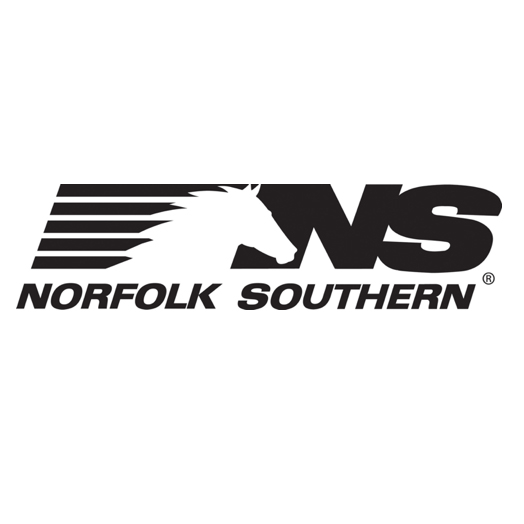
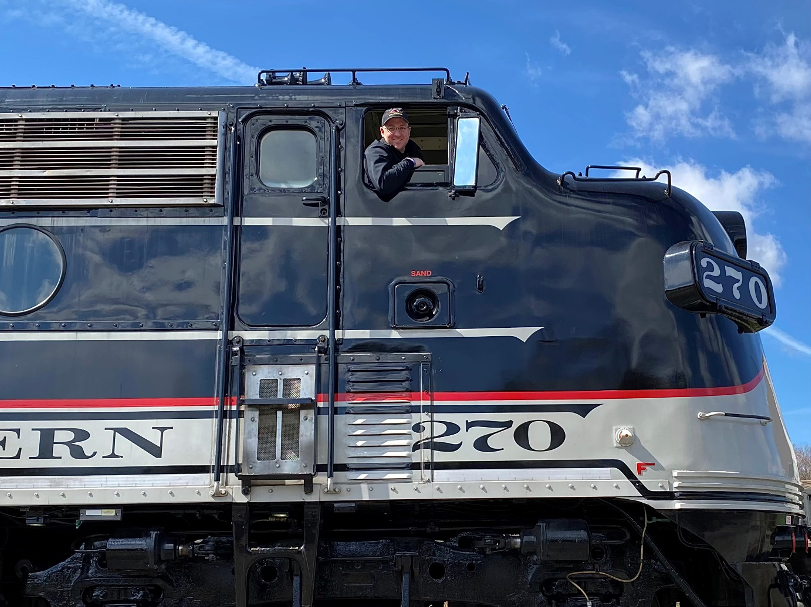
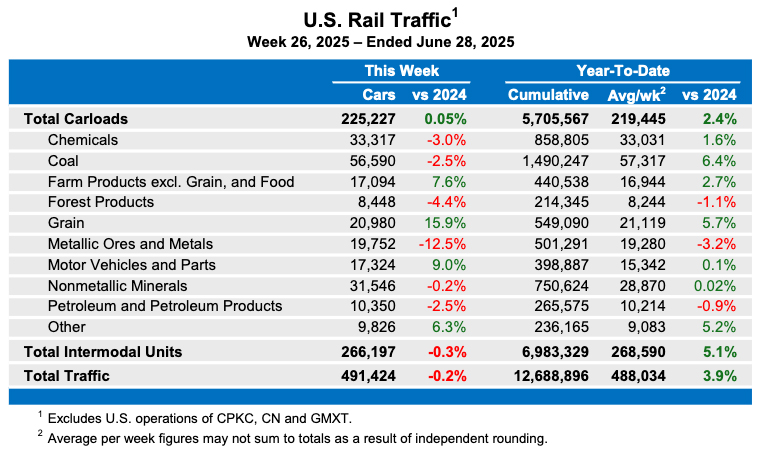
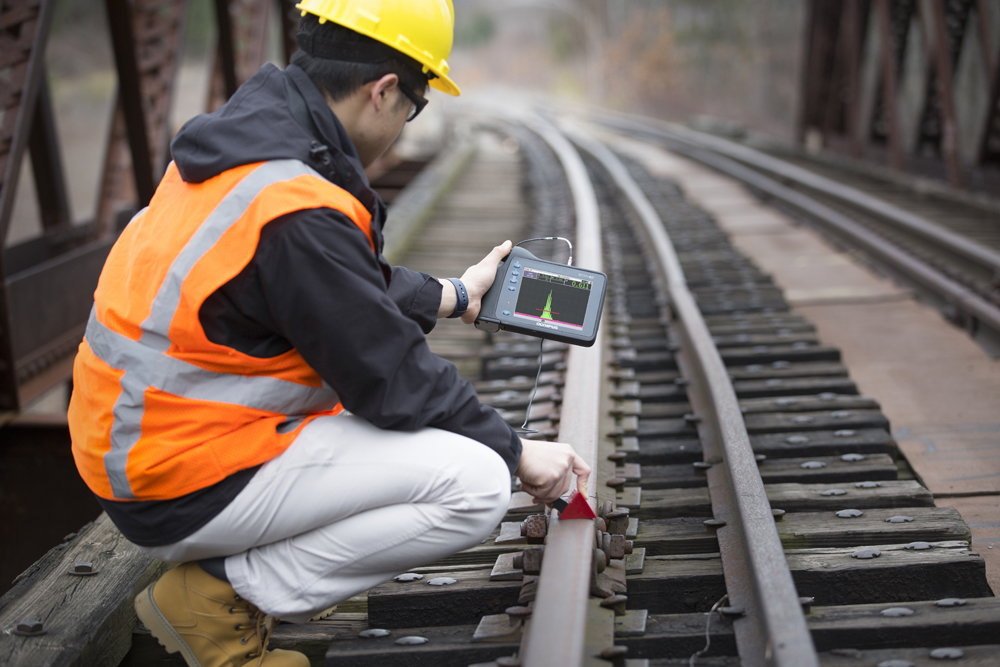




Recently got to see the “boneyard” at Beech Grove. Very depressing.
““Unforeseen mechanical issues” ” what a croak of ****. All of us (most of whom are not professional railroaders) leaving comments have predicted this based on the way Amtrak operates these days. Hardy unforeseen, but it’s the lack of willingness on Amtrak’s part to prevent these mechanical issues.
Many good comments on this thread. Current equipment shortages make Amtrak look like it is deliberately discouraging ridership. “Sold out” trains are only sold out because of lack of available equipment- but in truth, revenue decline from short trains is also killing the business. Where is the commitment to repair this system? The “flyboy” management is forcing more people on planes! Conflict of interest here?
I was on train 97 on Sunday (8/20). We pulled into Washington on time (6:45pm) and left almost 10:30pm. It was more than 3 hours because Amtrak literally ran out of diesel engines. The Crescent was sitting next to us also waiting for engines, and a regional headed into VA waited too. They were taking engines off northbound trains, turning them right around and hooking them up to the waiting trains. I couldn’t believe it.
I’ve been riding Amtrak long enough to know the issues with delays from the freight railroads. But its more frustrating when the issue is self-inflicted. We got into Miami almost 4 hours late. We had 3 main reasins for that. 1) the delay switching engines in DC, 2) Because we were 3 hours late, we met a northbound Amtrak train that was at the same single platform station in Florida and we had to wait for them to load passengers, and 3) the crew ran out of hours and we had to wait for a new conductor and a new engineer. All of those are Amtrak issues – not freight railroads, and that’s what is frustrating to me.
M.E. Singer, you make some good points. However, Amtrak was doomed from day one when congress mandated that the freight railroads allow it to operate on their privately owned tracks. The RR’s were okay with the devil’s bargain in the beginning because it allowed them to get out of the passenger business while they were battling onerous 100 year-old union rules and ICC regulations that were killing the golden calf. Wall Street saw greener pastures in airlines, auto manufacturing, and trucking. Railroad stock became virtually worthless and bankruptcies common. Fast forward to deregulation with the Staggers act and federal money flowing into the physical plant; and like a phoenix rising from the ashes, railroads again became the darling of Wall Street. The industry had once again gained power over the unions, could set its own freight rates, rationalize unprofitable branch lines, reduce crews from five to two, automate, and reward investors with stock buybacks, and their own executives with stock bonuses and generous cash bonuses. Where did Amtrak fit into all this? One day the railroads looked up and noticed they had an unwanted stepchild on their doorstep, using their tracks for virtually nothing, and contributing nothing in maintenance. Congress, with its short memory about the original agreement, was willing to turn a blind eye to Amtrak’s travails like timekeeping because it was beholden to Wall Street. Some of the most powerful politicians were, and still do, sit on the boards of railroads and investment firms. What’s the incentive for changing such a sweetheart deal? Politicians don’t take the train.
A week and a half ago the northbound Vermonter was delayed three hours by a sick electric engine which died in the East River tunnels just outside Penn Station. Much fun… and the Amtrak train status site never really did catch up to the situation, adding to the fun. Seems to me the boots on the ground are doing the best they can, but when you’re short of boots and equipment… maintenance and reliability kind of get lost.
Change will only start with a new Amtrak Board of Directors.
The existing Board could change what is going on but they are not.
Everyone who has any interest in Amtrak’s future needs to reach out to the Senate Commerce Committee (as well as their own Senators) to ensure that Board Chair Coscia is not reappointed for a third term and that a competent, knowledgeable and diverse set of Board nominees is absolutely essential.
Management’s failure at prioritizing the return of the long haul rolling stock is why there isn’t enough equipment to operate the current network. The Southwest Chief has been running this summer with just a baggage car and 6 cars, only two sleeping cars and two coaches. A third coach had been added at the start of summer, but in late July with the busy summer travel season still in full effect, it was taken off due to a shortage because a lot of equipment was facing air conditioning issues, forcing many cars to be taken to Beech Grove for repairs. The California Zephyr that has been running this summer with two sleeping cars, two coaches, and a transition sleeper, is looking like it will once again have one sleeping car removed next month, unless if more equipment is made available and management is willing to adjust operating plans. Room space is almost totally sold out for the 2nd week of September through most of October. Still insufficient sightseer lounge availability to reinstate those cars on the Capitol Limited and the Texas Eagle, although there is a rumor going around that full service dining will be returning to the Eagle in October. Let’s not even talk about the Capitol Limited; just 3 cars and a baggage car!!! Only one sleeping car and a single coach!! Totally sold out close to a month in advance since at least April with only a few exceptions. I’ll bet that ridership this fiscal year on the Capitol will drop from last year, all because there wasn’t sufficient equipment to operate it with the capacity that it was in demand for. A second coach is likely to be added in the coming days with a second sleeping car following shortly afterwards, based on the reservation system showing more inventory available. Great that capacity is finally being expanded on the Capitol Limited . Not so great that it’s happening in September, just in time for the end of summer! We’ll see what happens when fiscal year 2024 commences, which is supposed to call to finally start gradually reintroducing the long haul equipment, put in storage during Covid.
Here’s an interesting tidbit – Just watched a video of a trip on an Italian train which showed the sides of the mainline rails to be painted white, to retard heat absorbtion. Does this make any sense?
Is it a “p” instead of a “b?” Tough language.
Congress & the President have limited power over Amtrak’s Board & leadership, much the same as with the Postal Board & their leader Mr. DeJoy. Numerous members of Congress have pressed for changes with slow deliveries & poor svc which has fallen on deaf ears. When Congress held hearings on the issue asking Mr. DeJoy to reinstall sorting machine he simply replied NO!! The same applies to Amtrak’s Board until enough enlightened nominees can be can be placed on the Board who are willing to question the decisions of mgmt nothing will change.
It’s time for Amtrak to outsource their maintenance to a company that is held financially responsible for poor performance and rewarded when they exceed expectations. As a former TA and Conductor, I saw first-hand how pathetic the culture is at the maintenance facilities is. Theft, incompetence, and indifference are rampant. The few people that truly care about doing a good job fight an uphill battle and usually give up. There’s no excuse for trains being delayed or cancelled unless they arrive at their terminus incredibly late. For a set of equipment that’s been there for a day or more to be late is inexcusable!
I’ve watched all summer as the Southwest Chief has run, with very few exceptions, a two coach, two sleeper train. We ran at least three of each and, often, four coaches during the summer. The demand is there. Management needs to give a full accounting of why they’re turning away business on an unprecedented level!
Congress should demand that Amtrak hire railroaders instead of airline execs to run the company. There’s never been a successful Amtrak President who came from the airlines!
It’s also time to spend it’s money from the trains up! Staff and maintain them properly and whatever is left over can be used for a VERY slimmed down management team.
I feel really sorry for the on-board employees who have to deal with the problems created by their incompetent management. The vast majority of them are friendly, caring people who work hard to make every trip positive for their passengers. Those are the real heroes when everything goes wrong!
Amtrak immediately hire the laid off UP mechanical persons to speed up Amtrak’s recovery. As well the UP persons be allowed to maintain UP seniority even if recalled by UP.
Thanks to Bob Johnston’s persistence, we see a never ending, pathetic tale of woe; yet so avoidable. Rather than fixing the mess created internally by poor decisions between its naive corporate management and approved by an equally naive Board, Amtrak moves to re-direct the attention of its congressional and media critics by embracing Texas Central’s faltering HSR project between Dallas-Houston.
Amazing how neither Congress nor the media, let alone Texas Central’s faltering Board have picked up on the obvious point: if Amtrak cannot even competently maintain and operate its own minimal fleet of long distance trains, how can it possibly succeed to even advise, let alone, jointly operate a high frequency schedule of high speed, foreign-designed and built, HSR train sets?
At what point, if ever, does Congress, in exasperation, throw against the wall President Gardner’s prolific annual reports to Congress which should be titled “A Magical Mystery Tour”? Unless the doughnuts are so outstanding, how does Congress sit through another recital explaining Amtrak’s woes that persist in causing higher costs and lost revenues? Isn’t anybody at the GAO slightly interested to explain why, despite the extent of funding, America bought an Edsel; certainly not a viable passenger railroad?
Even the GAO can learn that when the railroads ran passenger trains, the New Haven, New York Central, and Pennsylvania required only 5 minutes to change power-no excuses. Where is the commitment for Amtrak to not only spend the funds secured from Congress to competently recruit, hire, orientate, and train, but to retain the replacements in maintenance, operations, and OBS? How will Amtrak make-up the loss in revenue from consists running short, or, simply cancelled?
Why has Congress failed to even make it a point that regardless of however close the Board Chair and his hand-picked CEO are; how protected they feel they are by Senator Schumer (NY), people will still walk the gangplank for authorizing bonuses while concomitantly cutting seasoned employees which explains the mess Amtrak is in? To bonus inexperienced management for creating the current issues in a normal company not funded and protected by tax dollars would be a one-way ticket to bankruptcy, with such inept decision-makers on the sidewalk. Remember GE?
Beyond these airline managers unable to shake-off their poor habits from their prior careers; an incomplete Board unable to provide meaningful stewardship only adds to the lack of direction causing financial waste and pushing away customers. As Coscia and Gardner loaded up corporate management with the flyboys, apparently nobody explained to the new guys how they would do better if they actually rode the trains to appreciate the product they’re selling; not just once before meeting with Congress. I can assure them if they had actually made it through to be hired under Reistrup, Claytor, or, Gunn, they would have quickly learned what the expectations to fulfill were.
The MBTA had to replace rail that wasn’t that old because they found out it was not treated for temperature in our area when CSX (Boston Main line )
installed the initial rail. The MBTA purchased the mainline from Boston to Worcester, That is why they replaced the rail and not CSX. don’t know the math either, but it would seem to be considered everywhere when they install new rail.
How did the Santa Fe handle such heat problems when it operated passenger trains?
Sante Fe and other railroads used jointed rail until the mid to late nineties, when welded rail started to become prevalent. Welded rail is the issue.
We NEVER get a statement fromMr. Gardner! I wonder why.
Could this be Mr. Gardner’s plan to drive away LD passenger business? It sure smells like it.
This is a set of problems that have been emphasized by many experts for some time.
Dr. Güntürk Üstün
How long will it take to get competent management in charge of Amtrak??? This is absurd.
One of the segments of the”Roaming Railfan” Youtube series covering the FEC double-tracking and expansion for the Brightline rollout covered how track was “destressed” to deal with heat extremes. This involved a mathematical formula for heating the weld points in the CWR depending on several inputting factors. Does this take care of the issue for FEC? Is it applicable on NS and elsewhere? I don’t know, just pointing it out.